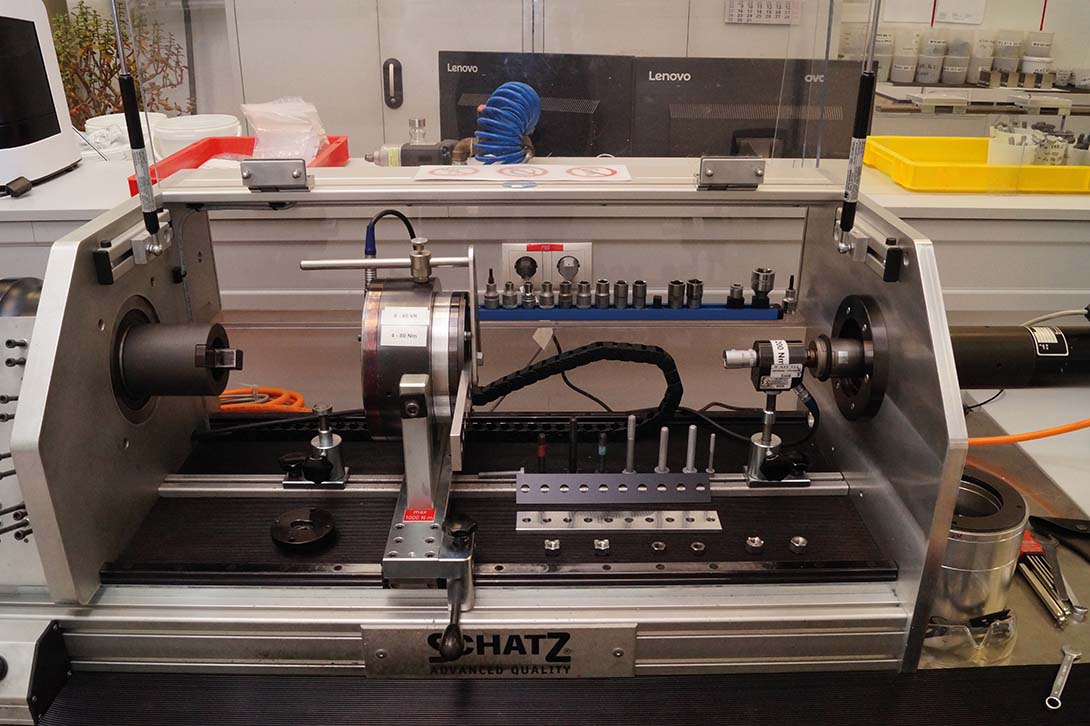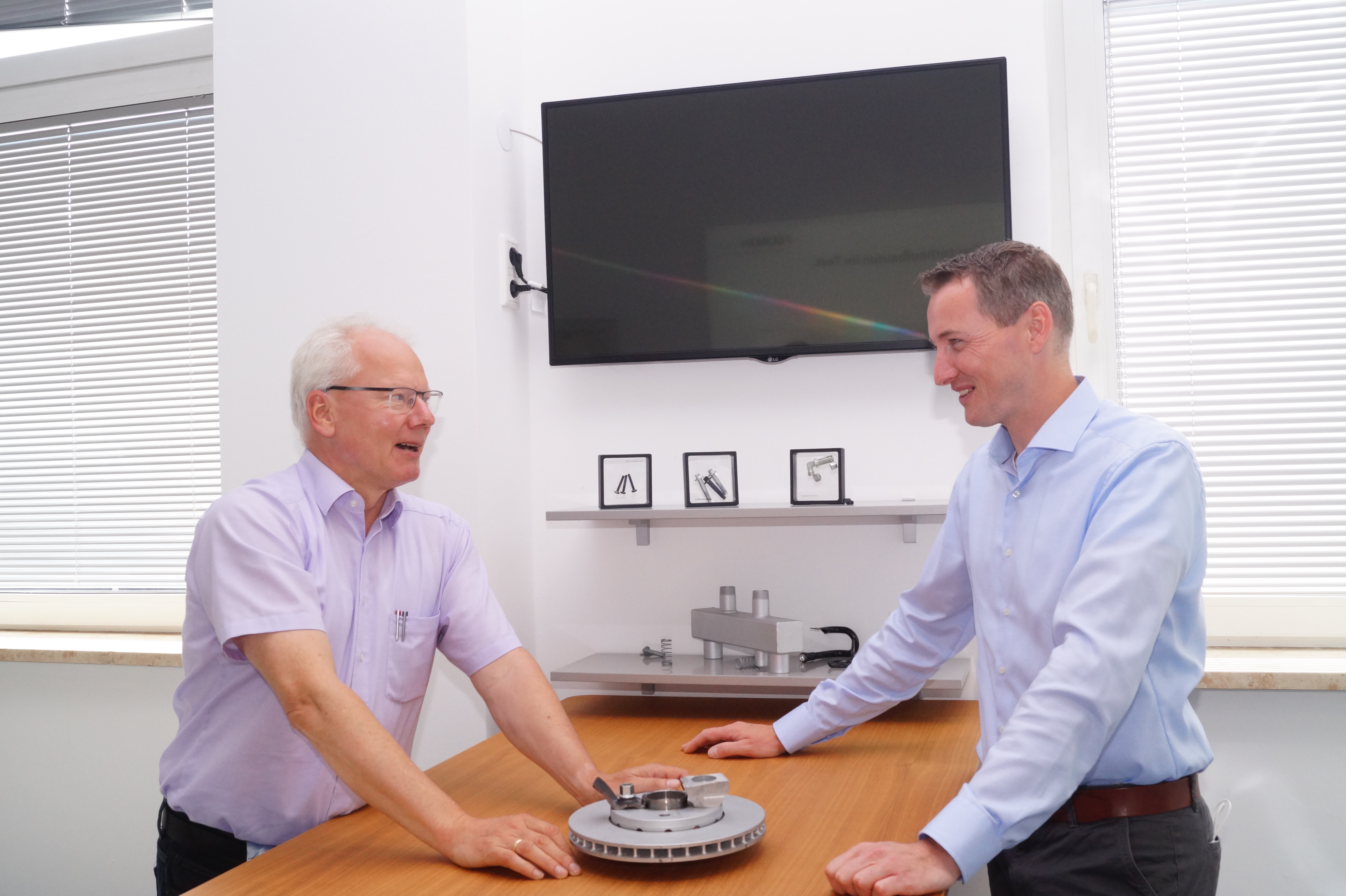
Corrosion-proof fasteners are essential in the automotive industry and they perform an equally critical function in wind turbines. Thanks to its choice of four ANALYSE systems from Kistler to determine friction coefficients, Dörken can meet ever stricter test requirements and ensure compliance with uniform standards throughout the world – especially for its zinc flake coatings.
How is it that a fastener testing laboratory is located on the site of a chemical company that generates most of its sales (totalling around €300 million) from paints, varnishes and laminated sheets for roofs? Founded back in 1892, Ewald Dörken AG has its headquarters in the German town of Herdecke in north Rhine-Westphalia. As well as construction finishing and coatings of all types, the company’s expertise also includes corrosion protection – with a special focus on fasteners.
 Virtually all the fasteners in a car are coated, and what are known as zinc flake coatings are used for this purpose in most cases. Small steel components are cleaned and dipped in an immersion bath containing the coating; the excess is then spun off, and the final stage of the process is baking. As zinc is less noble, it protects the coated metals – and the same process is also used for large M24 anchor bolts in wind turbines.
Virtually all the fasteners in a car are coated, and what are known as zinc flake coatings are used for this purpose in most cases. Small steel components are cleaned and dipped in an immersion bath containing the coating; the excess is then spun off, and the final stage of the process is baking. As zinc is less noble, it protects the coated metals – and the same process is also used for large M24 anchor bolts in wind turbines.
However, this process is not carried out on Dörken’s own site – instead, it is performed by coating service providers. These independent companies and licensees are supplied and audited by Dörken. Its worldwide network includes over 200 of these ‘coaters’ who ensure that the right corrosion protection is applied to fasteners, nuts and other parts for the automotive industry, the wind power and mechanical engineering sectors, as well as many other special purpose applications. There are also other technologies such as coil coating and galvanic coating – but these methods are not so important in terms of volume.
The easy way to determine the friction coefficient
It is essential to ensure that the fasteners can still be processed after they have been coated. For this purpose, friction coefficient tests are carried out continuously in the Herdecke laboratory and at three other facilities in China, Korea and the USA. An ANALYSE system from Kistler is operated in each of these Dörken Tech Centres. These systems can perform large numbers of friction coefficient tests that meet the specifications required by the automotive industry and many other sectors. Michael Stähler, lead technologist – fasteners, has been with the company for 15 years and is responsible for laboratory equipment, training, sales and advice for customers.
He explains: “Thanks to the test stands from Kistler, we can accurately and reliably determine the friction coefficient – the link between torque and preloading force. One point to note here is that different customers or countries prefer different friction coefficient windows. These are influenced by lubrication, which makes the overall picture somewhat complex. Increasingly efficient processes in the automotive industry are presenting quite a few challenges for measurement technology – but with the ANALYSE system from Kistler, we have no problems in meeting customers’ standards that require pre-tightening up to 700rpm.”
Different test methods have to be applied depending on the fastener and the specification – faster or slower tightening, and fastening in relation to specific reference parts with steel, aluminium or CDC (cathodic dip coated) surfaces. This calls for a system that can be used with some degree of flexibility, as well as software that reduces the user’s workload to the minimum and makes the process easier.
Oliver Jakob, channel manager fastening technology EMEA at Kistler, outlines the benefits of ANALYSE systems. “Our test stands for determining the friction coefficients of detachable fasteners can be assembled flexibly from a variety of modules and components – also, for example, they can be equipped with different drives. For instance, our testXpert software includes both predefined and freely configurable test procedures, as well as being designed to be user-friendly.”

(Michael Stähler (left), lead technologist – fasteners at Dörken, in conversation with Oliver Jakob, channel manager fastening technology EMEA at Kistler)
Kistler’s global presence and reputation persuaded Dörken to opt for ANALYSE systems at an early stage. The test stand at the company’s German headquarters was expanded in 2015 and then in 2019 the USA became the fourth location for friction coefficient determination. “That means we can now carry out uniform testing in all our Tech Centres. The testing regulations we develop here at the headquarters can be rolled out globally via Kistler software, with guaranteed process reliability,” adds Michael Stähler.
Another advantage is that regular calibration ensures reliable compliance with customer standards that specify certain reference parts down to the last detail. Organisations such as the German Fastener Association (DSV) – where Stähler chairs the ‘Surfaces’ working group – also conduct round-robin tests to assess the comparability of test stands with different measurement principles.
The ANALYSE system: Uniform, efficient and modular
“Our four ANALYSE systems from Kistler also give us excellent international positioning. They stand us in good stead with our customers. High measurement frequency, excellent resolution and direct evaluation – this is a combination that leaves almost nothing to be desired,” mentions Michael Stähler. “What’s more, all the data and measured values – even from previous software versions – are stored and traceable. That’s quite reassuring not only for us, but also for the coaters and end customers – and into the bargain, there’s the good service that Kistler provides, available everywhere in the world.”
Which trends are shaping the future of fastening technology and how is the market likely to develop in the coming years? Michael Stähler points to increasing test requirements imposed by the automotive industry, such as faster tightening and multiple fastening. He also foresees other developments that will depend on factors such as the availability of certain materials.
Michael Stähler comments: “Ultrasonic control of tightening during the fastening process is an interesting technology, even though it’s not all that relevant for us in the corrosion protection segment. With this technique, the preloading force is determined continuously from the change in runtime on the fastener, which is measured ultrasonically. At present, however, this process is tied to general conditions such as plane parallel areas on the fastener heads and ends.”
Oliver Jakob adds: “We can already feed ultrasonic signals into our ANALYSE systems and we can use suitable calculation functions to establish a direct relationship between the preloading force measured by the force sensor and the elongation of the fastener measured via ultrasound.”
www.kistler.com

Will joined Fastener + Fixing Magazine in 2007 and over the last 15 years has experienced every facet of the fastener sector - interviewing key figures within the industry and visiting leading companies and exhibitions around the globe.
Will manages the content strategy across all platforms and is the guardian for the high editorial standards that the Magazine is renowned.
Don't have an account? Sign Up
Signing up to Fastener + Fixing Magazine enables you to manage your account details.